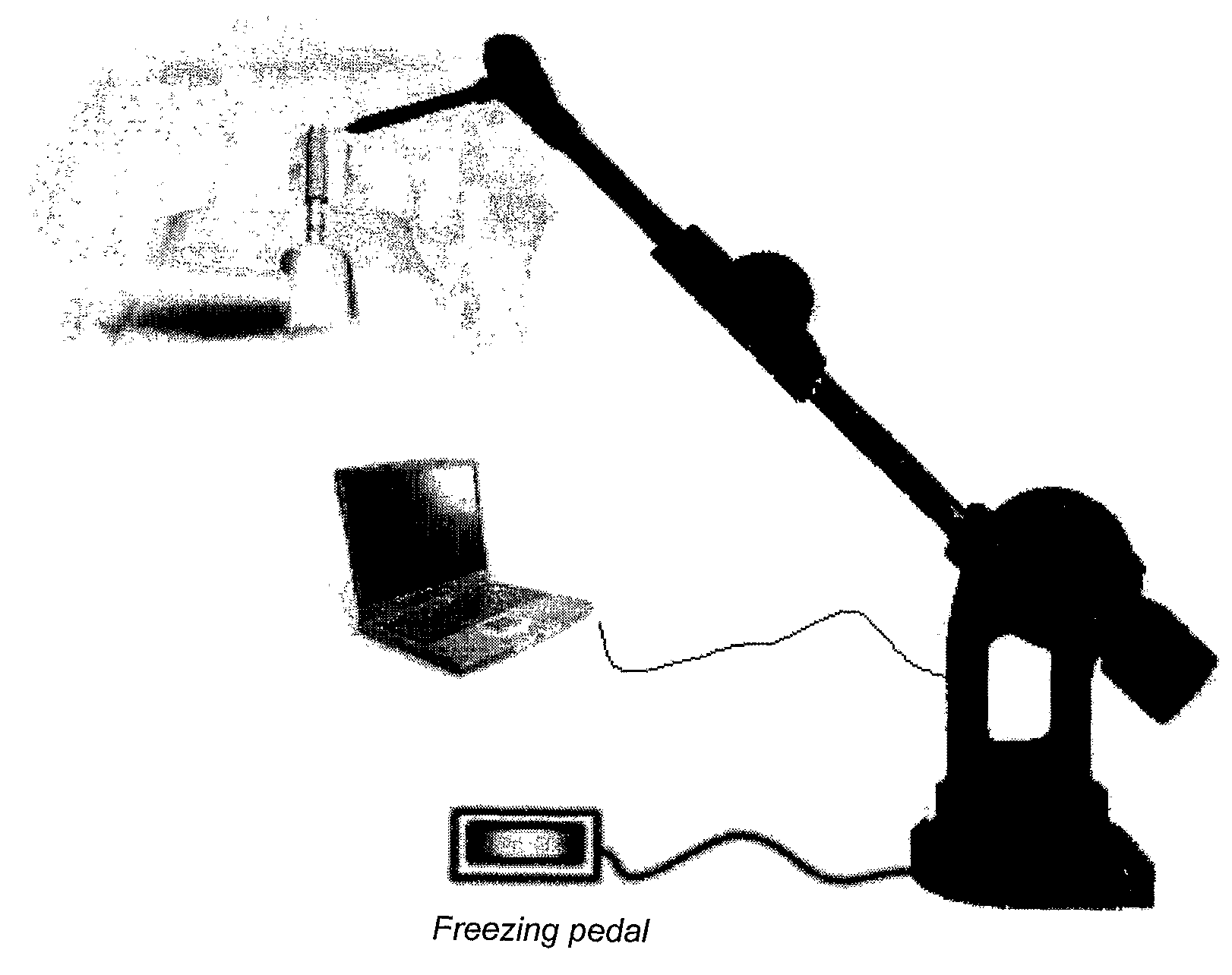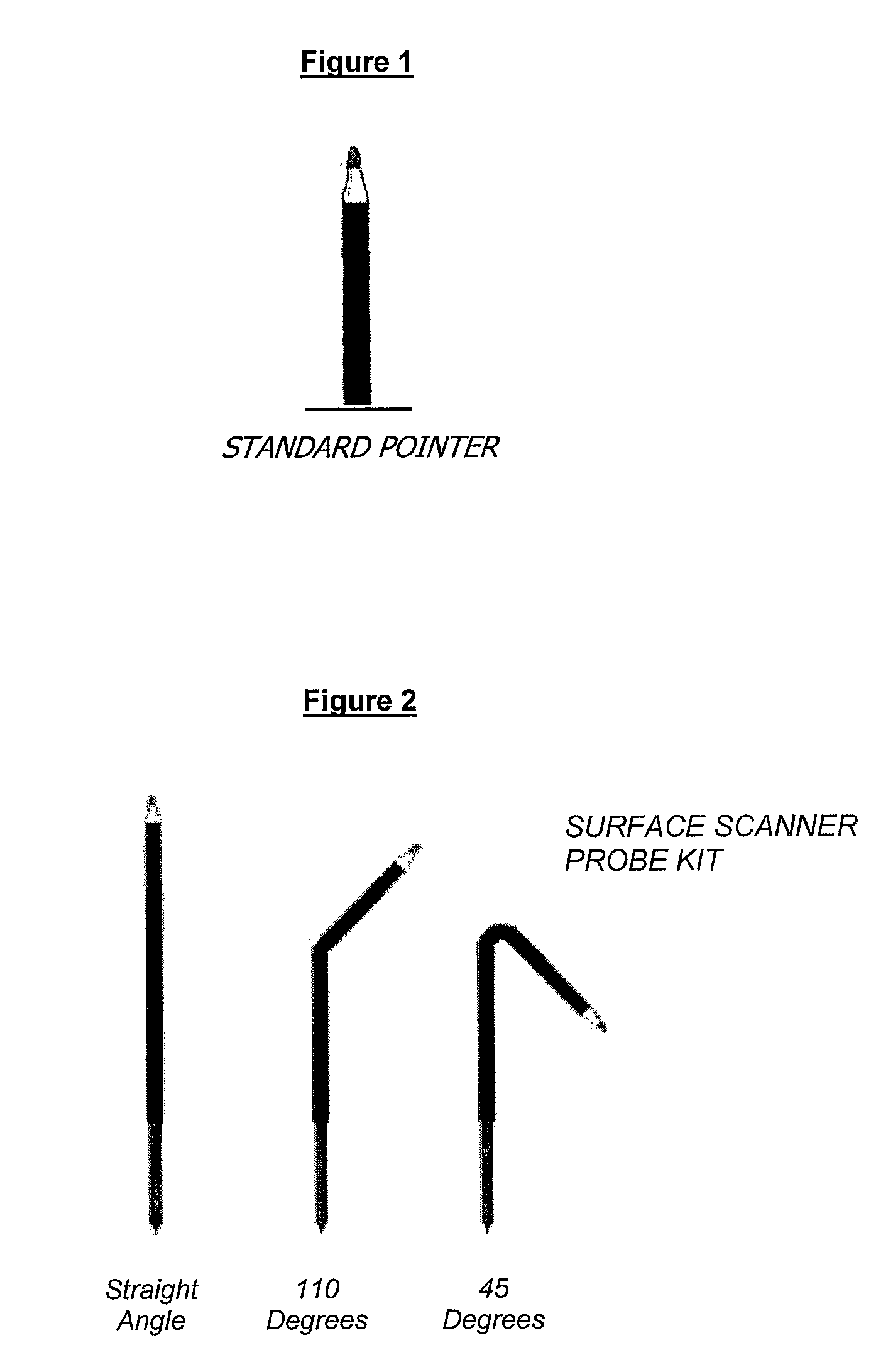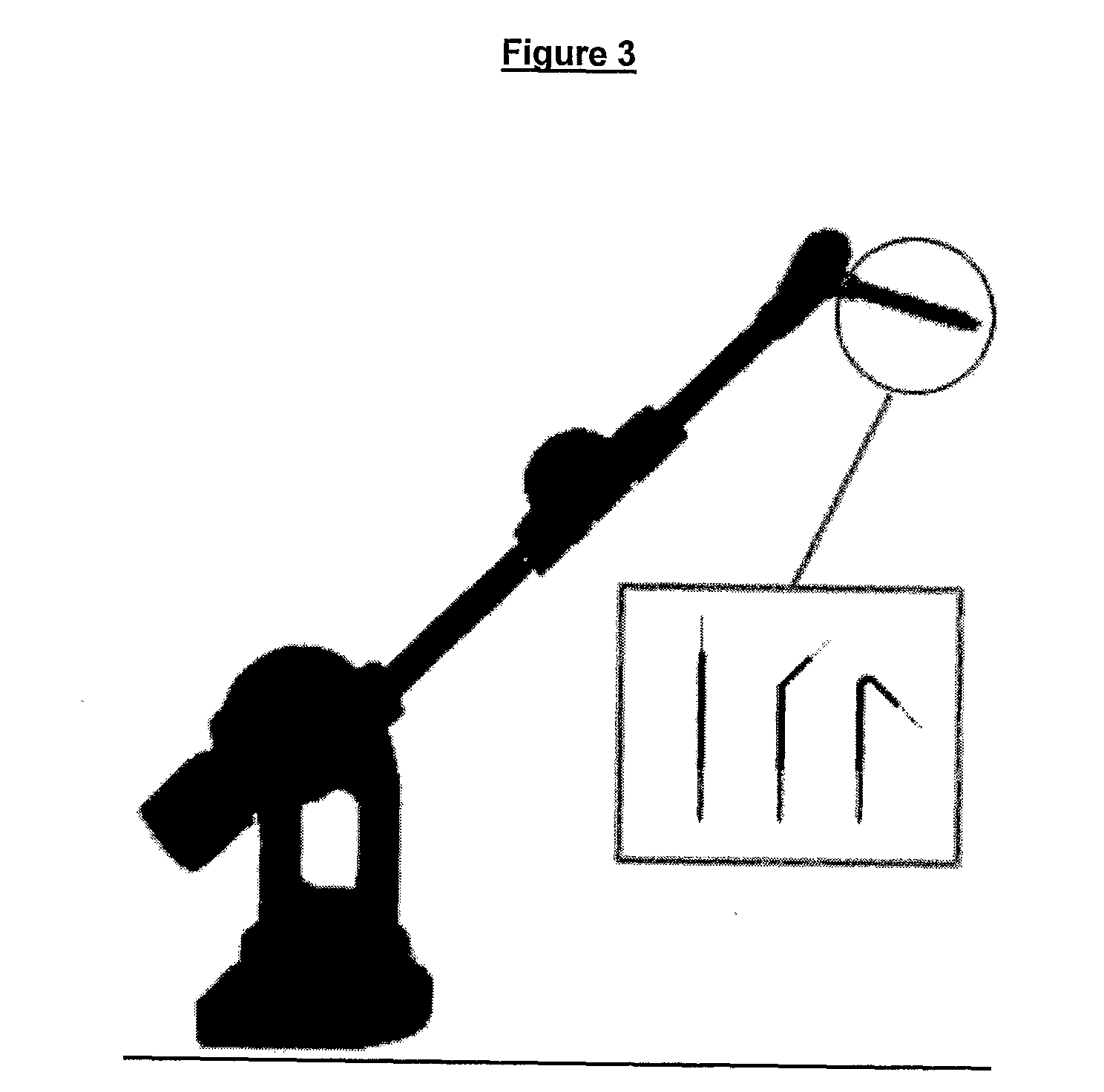Apparatus for Digitalization of Dental Structures, and Method for Recognition of Three-Dimensional Data of Dental Structures
a technology for dental structures and apparatuses, applied in dental prosthetics, medical science, dentistry, etc., can solve the problems of high precision, large impairment of precision, and complex device's functioning, and achieve the effects of high precision, precise and efficient, and greatly impaired precision by the complexity of the device's functioning
- Summary
- Abstract
- Description
- Claims
- Application Information
AI Technical Summary
Benefits of technology
Problems solved by technology
Method used
Image
Examples
Embodiment Construction
[0022]As already mentioned above, the present invention aims to describe a digitizing device for dental structures with direct mouth scanning. The invention has as one objective to enable dental surgeons to make copies of their patients' teeth data by passing the digitizer with an articulated arm at selected points and sending information to software, transforming them in data for 3D. The data thus supplied may be transformed in pieces for later confection of the ceramic crown. This fact will allow the dental surgeon to use an original technology and which will certainly reach international projection of utilization and commercialization.
[0023]The prototype of the digitizer of dental structures here described was built as an improvement over a contact scanner known as MicroScribe-G2X, described in the North American U.S. Pat. No. 6,134,506, here incorporated as reference, which is currently used in the shoe industry. Structural modifications were made from this equipment, with the i...
PUM
 Login to View More
Login to View More Abstract
Description
Claims
Application Information
 Login to View More
Login to View More - R&D
- Intellectual Property
- Life Sciences
- Materials
- Tech Scout
- Unparalleled Data Quality
- Higher Quality Content
- 60% Fewer Hallucinations
Browse by: Latest US Patents, China's latest patents, Technical Efficacy Thesaurus, Application Domain, Technology Topic, Popular Technical Reports.
© 2025 PatSnap. All rights reserved.Legal|Privacy policy|Modern Slavery Act Transparency Statement|Sitemap|About US| Contact US: help@patsnap.com



